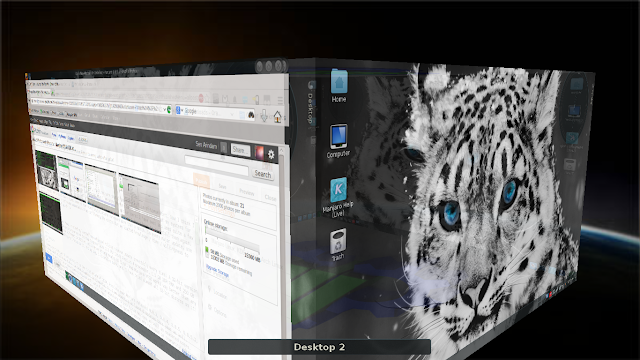I have used a lot of rolling release distros in last 5 years, but, for production purpose, till recently, I mostly relied on only a few - Linux Mint, Debian and Ubuntu LTS. Primarily because the so-called "install it once only" promise hardly worked for most of the rolling release distros and they inevitably break or become unbootable after a couple of major upgrades. However, my experience with Manjaro Linux and Chakra Linux in the past 12 months have successfully changed that impression. These two Arch based distros survived 4 major upgrades and still running great, even with a whole lot of customization and niche packages that I installed.
 |
| From Manjaro 0.8.10 KDE & XFCE http://mylinuxexplore.blogspot.in |
Of these two, Chakra is primarily a 64-bit distro with KDE desktop and is meant for modern machines. Manjaro, on the other hand, ships both 64 and 32 bit versions with KDE, XFCE, Openbox, GNOME, Mate, and other common flavors. Ideologies of both the distros are quite contrasting but one thing is common between them - no one makes better rolling release distros than these two. In this review, I take up the latest 0.8.10 release from the Manjaro stable.
On 10th June, 2014, Manjaro released the latest update 0.8.10 with KDE, XFCE and Openbox flavors. The release note talks of this being the "most refined and user-friendly" Manjaro release till date. For this review, I downloaded and installed fresh copies of 64-bit KDE (1.6 GB ISO) and XFCE (1.1 GB ISO) spins. I created live USBs of both using Linux Mint Image Writer on 4 GB pendrives and installed on separate 50 GB partitions on my Asus K55VM laptop.
Manjaro Linux 0.8.10 has Linux kernel 3.12.20, KDE 4.13.1 (KDE spin) and XFCE 4.10 (XFCE spin). Dolphin 4.13.1 is the default file manager in the KDE spin and Thunar 1.6.3 in the XFCE spin.
Read more!
